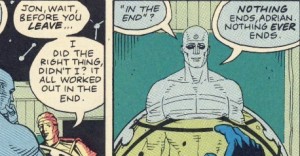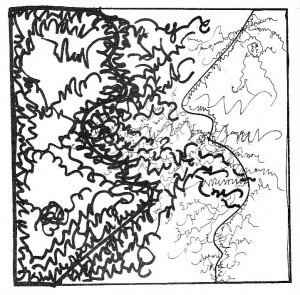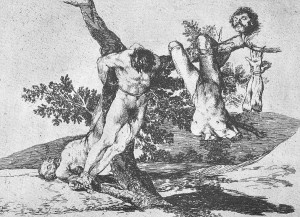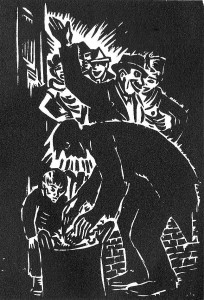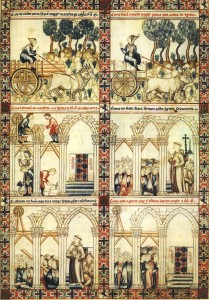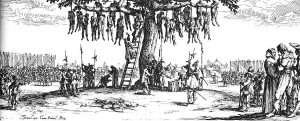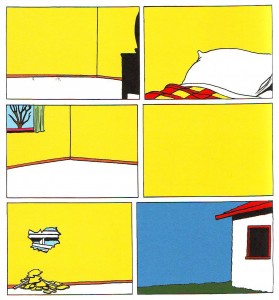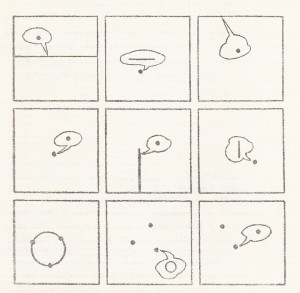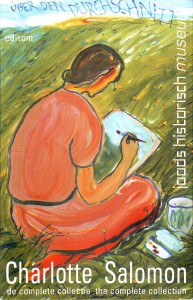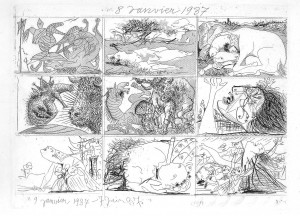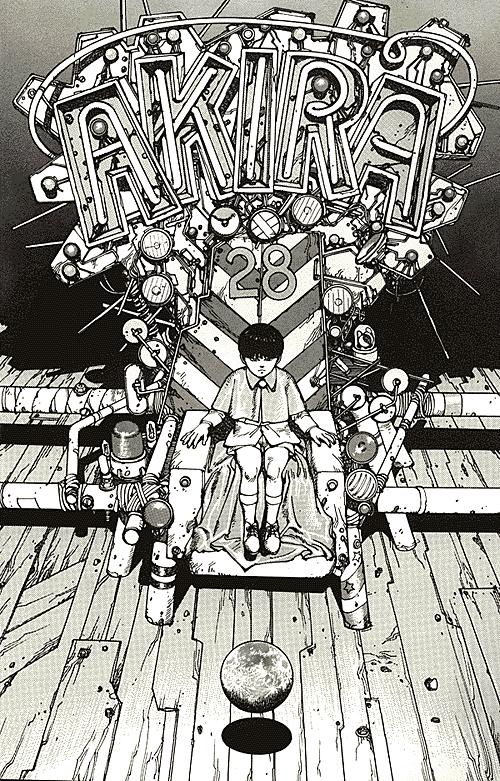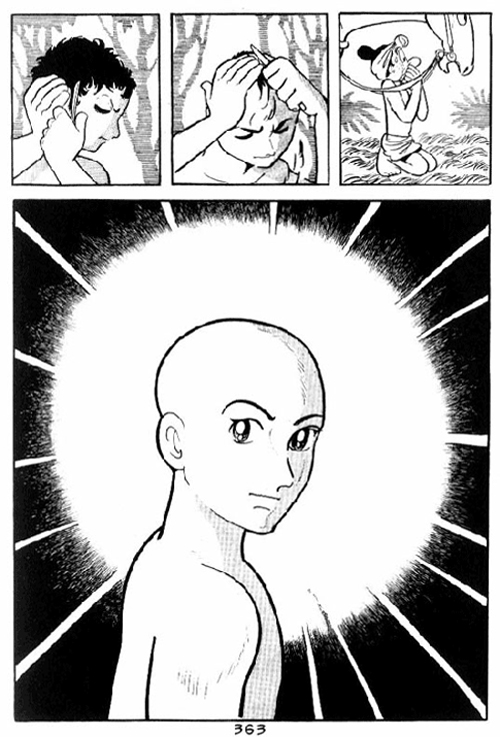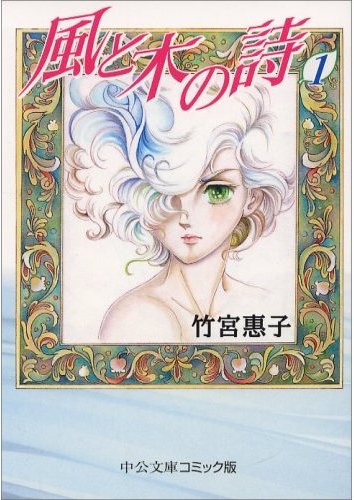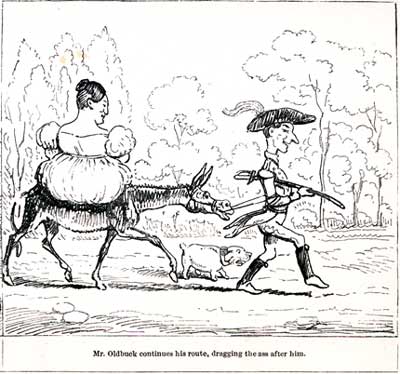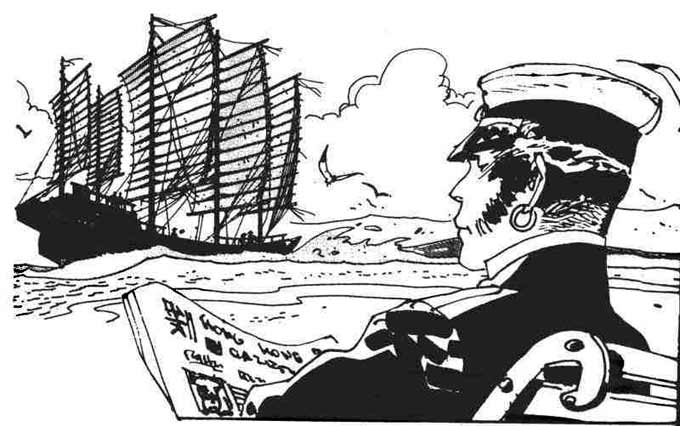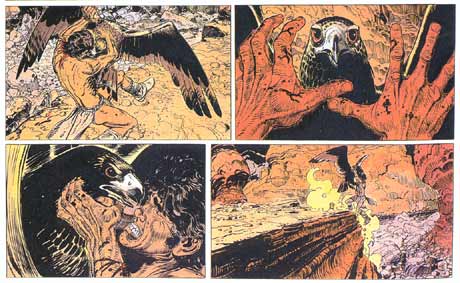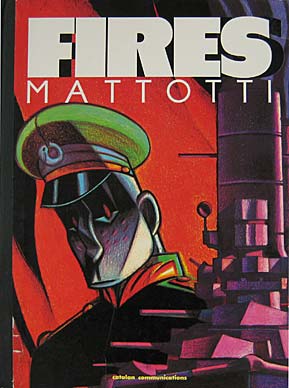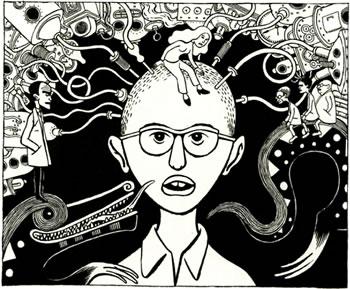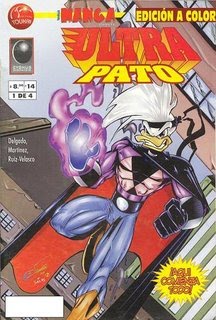We’re going to be taking it easy at The Hooded Utilitarian this week. Apart from this post, we’re just going to be publishing the remainder of the lists. We’ll be back with more to engage, enlighten, and outrage next Monday.
My original goal with this post was to discuss the poll results and the comics canon. However, it seems a rather odd undertaking, largely because the notion that the results are indicative of the canon is a conceit. The top ten and Top 115 lists we compiled are indicative of nothing more than the consensus views of the 211 people who submitted lists, and even that is somewhat filtered (i.e., skewed) at points through the perspective of the poll’s editor (myself). Another thing to remember is that those who submitted lists prepared them with different motives. The question they responded to is, “What are the ten comics works you consider your favorites, the best, or the most significant?” A list of “the best” is different than “the most significant,” and both are distinct from “favorites.” Perhaps the best way to proceed is to acknowledge that most of what follows is presumptuous, and if readers want to reject it on that basis, my feeling is they are right to do so. However, I hope they consider the thoughts put forth at least worth considering to a degree.
A few observations about our list:
This project is in some ways a continuation of, and in others a response to, The Comics Journal’s ranked 1999 list of the 100 Best Comics. The Journal list was restricted to English-language material, and relied on opinions from the magazine’s editors and columnists (eight people altogether) rather than on a broader poll. You can see the Journal list here, and a discussion of the thinking behind it here. I’ll talk about some differences between the Journal’s list and ours in the points that follow.
The major newspaper strips are still seen as the most important comics works. We’re supposedly in the graphic-novel era. However, the top three vote getters–Peanuts, Krazy Kat, and Calvin and Hobbes–outpaced the number-four work (and by extension, the rest of the list) by the quite large margin of 14 votes. As far as the poll participants appear concerned, these three strips are the crown jewels of the comics medium. The importance of the great newspaper strips was further reinforced by Little Nemo in Slumberland’s sixth-place ranking, as well as by Pogo coming in eighth. When half the top ten is from a particular mode of comics, I think it’s safe to say the field considers that mode where the most important work has been done.
The two most highly regarded graphic novels are Watchmen and Maus. I haven’t come across anyone questioning Maus’s placement yet, but I’m incredulous that some would be surprised—even shocked—at Watchmen’s high ranking in the poll. When it comes to graphic novels, these two works have by far the largest readership constituency outside of the comics community. Maus has sold at least in the high hundred thousands, andWatchmen has sold in the millions. There is no reason for readers to feel they are slumming with Watchmen; the book’s inclusion in Time’s 100 Best Novels and Entertainment Weekly‘s 100 Best Reads lists are reasonable signs that it enjoys the broader culture’s respect. If the larger world holds the book in high regard, it makes sense that this view would be reflected in the comics world as well. Those taken aback by its placement generally strike me as those who have a prejudice against superhero material, or at least the work done in the genre over the last 40 years. I suppose they are like those who turn their noses up at Ian McEwan’s Atonement because of its similarities to category romance fiction, or at Kazuo Ishiguro’s Never Let Me Go because it is a science-fiction novel. Saying a certain work or genre isn’t to one’s taste is one thing; we all do it, and we’re all entitled to that opinion. Treating a work as inherently inferior because it comes from a particular genre is quite another. Watchmen is not just one of the most important graphic novels; it’s one of the most important contemporary novels, period. To act as though the situation is otherwise is at best myopic. I’m not for a moment saying anyone has to like Watchmen, but it should be acknowledged that the book is far bigger than any one person or group’s opinion of it.
The Fourth World will soon eclipse the reputation of Jack Kirby’s Marvel work, at least in comics circles. This is more of a prediction than an observation, but it has its foundation in the poll results. The Fantastic Four’s better showing in the poll was due to all of one-third of a vote. If just one more participant had voted for The Fourth World, it would have been the Kirby work that made the top ten. The Fourth World’s reputation has been increasing over the years, and I doubt it has peaked now. No slight intended against Andrew Farago, but posting The Fantastic Four piece so soon after the Kirby family’s loss in their lawsuit against Marvel was painful. A list in which The Fourth World outranked The Fantastic Four might have been a consolation of sorts. Well, maybe next time.
R. Crumb’s counterculture material is his most important contribution to comics. Noah Berlatsky has wondered if Crumb’s star is falling given the placements of his work in the poll. Noah has pointed to the fact that while Crumb’s Weirdo work made the top ten in The Comics Journal’s Best 100 a dozen years ago, nothing by him made the top ten this time out. I don’t agree with Noah’s speculation. When the Journal’s editors put together the magazine’s Best 100, it apparently didn’t occur to them to create a counterculture-era umbrella entry to cover his works of that period. If they had, I think it would have made their top ten. (And given the material’s ubiquity in the six of the eight contributor lists that were published, it should have.) Judging from those contributor lists and the Journal’s traditional idolatry of Crumb, the Weirdo material’s high placement didn’t reflect the work’s consensus status so much as it did the desire to get something—anything—by Crumb into the top ten. When it comes to Crumb, our poll results likely reflect two things. The first is that the consensus view of Crumb, while one of high esteem, is more measured than the Journal’s. The second is that we did a much better job of giving the counterculture material its due when interpreting the votes. The counterculture work is where Crumb had by far his biggest impact and influence, and I believe this poll’s rankings reflect that it is asserting its proper place in estimations of his career.
Dave Sim is indeed one of the best cartoonists North America has produced. I’m not a fan, and his gender and religious blarney sets my teeth on edge, but there’s no denying his achievements in Cerebus. He is one of the most technically accomplished cartoonists to ever work in the field, and few have managed, much less surpassed, his expansions of the form’s language. Sim did not make the Journal’s Best 100 list. This was despite the fact he and selections from Cerebus were mentioned on at least three and possibly four of the eight voters’ lists. It is hard not to see Sim’s exclusion from the final one as a deliberate snub. I’m glad to see him get a fairly high level of acknowledgement in this poll.
Yes, good English-language adventure comics have been published since 1970. The Journal’s Top 100 list reflected publisher Gary Groth’s view that virtually all adventure comics of the last 40 years (i.e., every one published since he turned 16) are beneath notice. Watchmen, The Fourth World, and V for Vendetta were the only contemporary adventure works acknowledged, and they were kicked to the bottom of the list. (A look at Groth’s personal Top 100 shows he didn’t vote for any of them. Click here.) I’ve already discussed the first two works, and I note that V for Vendetta made our list as well. However, there’s also Batman: The Dark Knight Returns, The Sandman, Bone, Daredevil: Born Again, The Invisibles, and over a dozen others that received listings in our Top 115. Ignoring these efforts while lionizing similar (and to many eyes less accomplished) material from before 1970 was an injustice, and I’m happy we were able to redress it.
The consensus view of The Hooded Utilitarian’s regular contributors both converges and diverges with the consensus of the field. Here are the top 13 vote-getters among this website’s contributing writers:
- 1. Peanuts, Charles M. Schulz [8 votes]
- 2. Krazy Kat, George Herriman [5 votes]
- (tie) Watchmen, Alan Moore & Dave Gibbons [5 votes]
- 4. The Alec Stories, including The Fate of the Artist, Eddie Campbell [4 votes]
- (tie) From Hell, Alan Moore & Eddie Campbell [4 votes]
- 6. The Locas Stories, Jaime Hernandez [3.5 votes]
- 7. Calvin and Hobbes, Bill Watterson [3 votes]
- (tie) A Drunken Dream and Other Stories, Moto Hagio [3 votes]
- (tie) The Fourth World Stories, Jack Kirby, with Mike Royer, et al. [3 votes]
- (tie) Hi no Tori [Phoenix], Osamu Tezuka [3 votes]
- (tie) Die Hure H [W the Whore], Katrin de Vries & Anke Feuchtenberger [3 votes]
- (tie) Journal, Fabrice Neaud [3 votes]
- (tie) The Sandman, Neil Gaiman, et al. [3 votes]
On the basis of this, I’d say we agree with the rest of the field at least half the time.
There’s a lot more to be said about this poll, and a lot more to be said about the comics canon in the future. The canon is a synopsis at a given time of a never-ending dialogue, and lists like the one produced by our poll provide an enjoyable snapshot of where that dialogue stands. They also allow us an opportunity to sit back and take stock. I think Sight and Sound magazine is right to do this just once a decade with movies. The time between polls is neither too great nor too little. It allows people to see the shifts in the consensus view without the overall picture getting too expansive or narrow. And by reserving a special time for judgments, it implicitly puts the emphasis on criticism where it belongs, which is with discussion. Criticism isn’t about being right or wrong; it’s about helping people see work in new and more insightful ways. That can and should go on forever.

